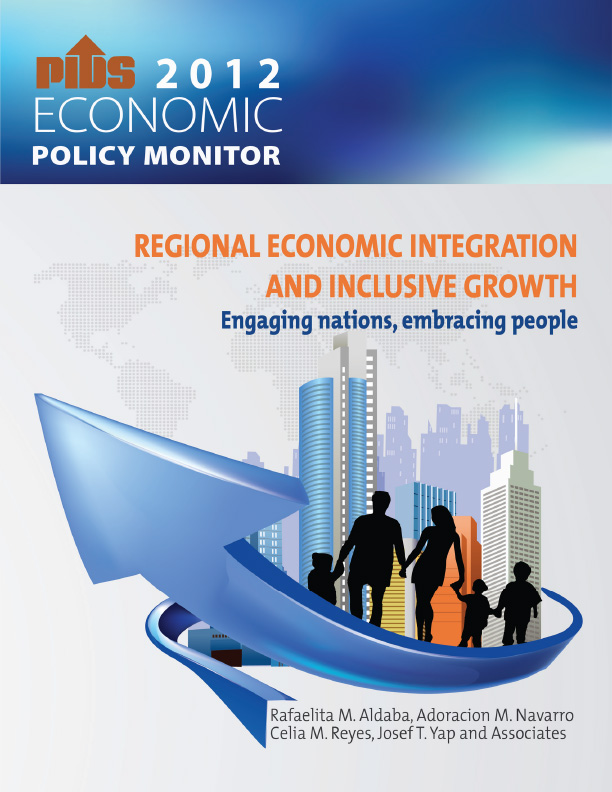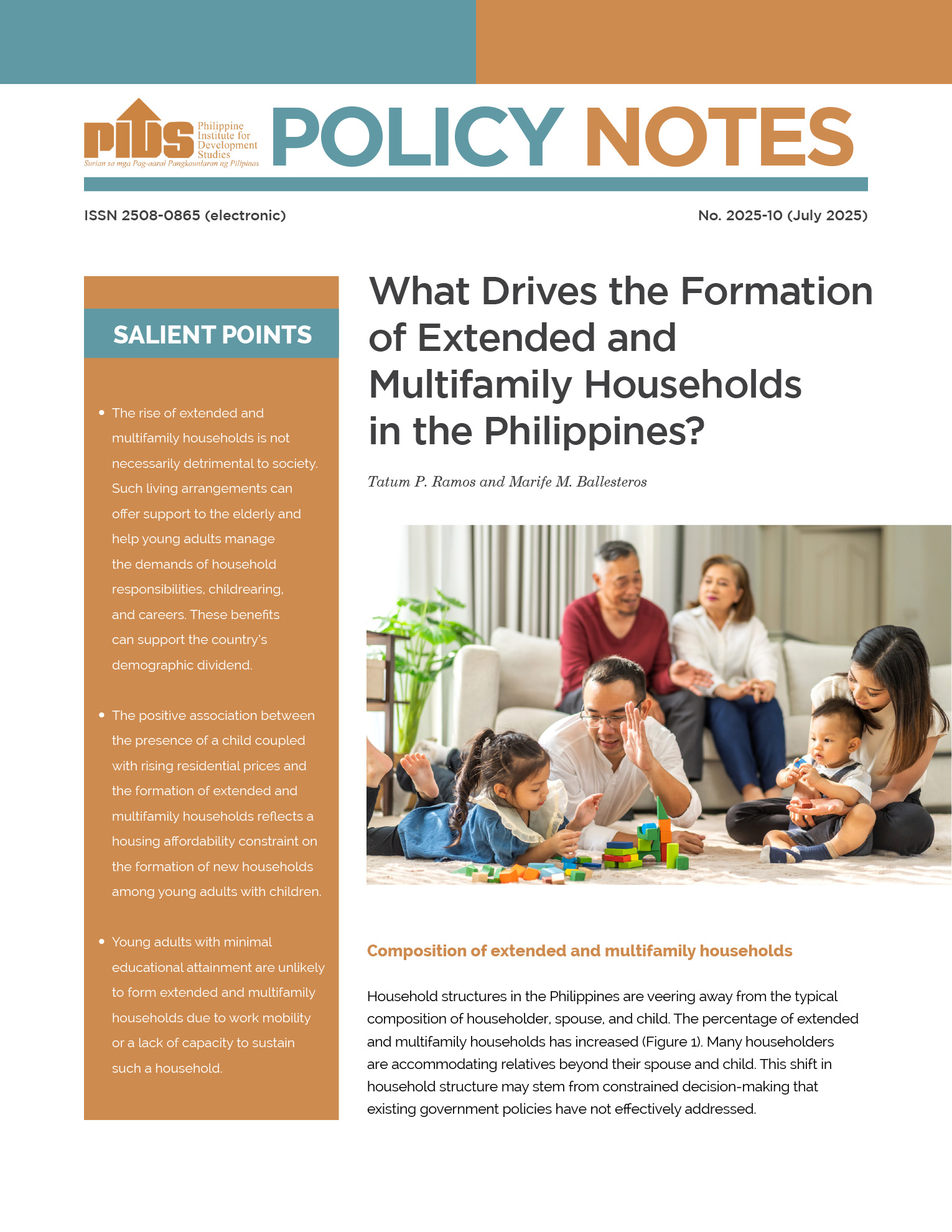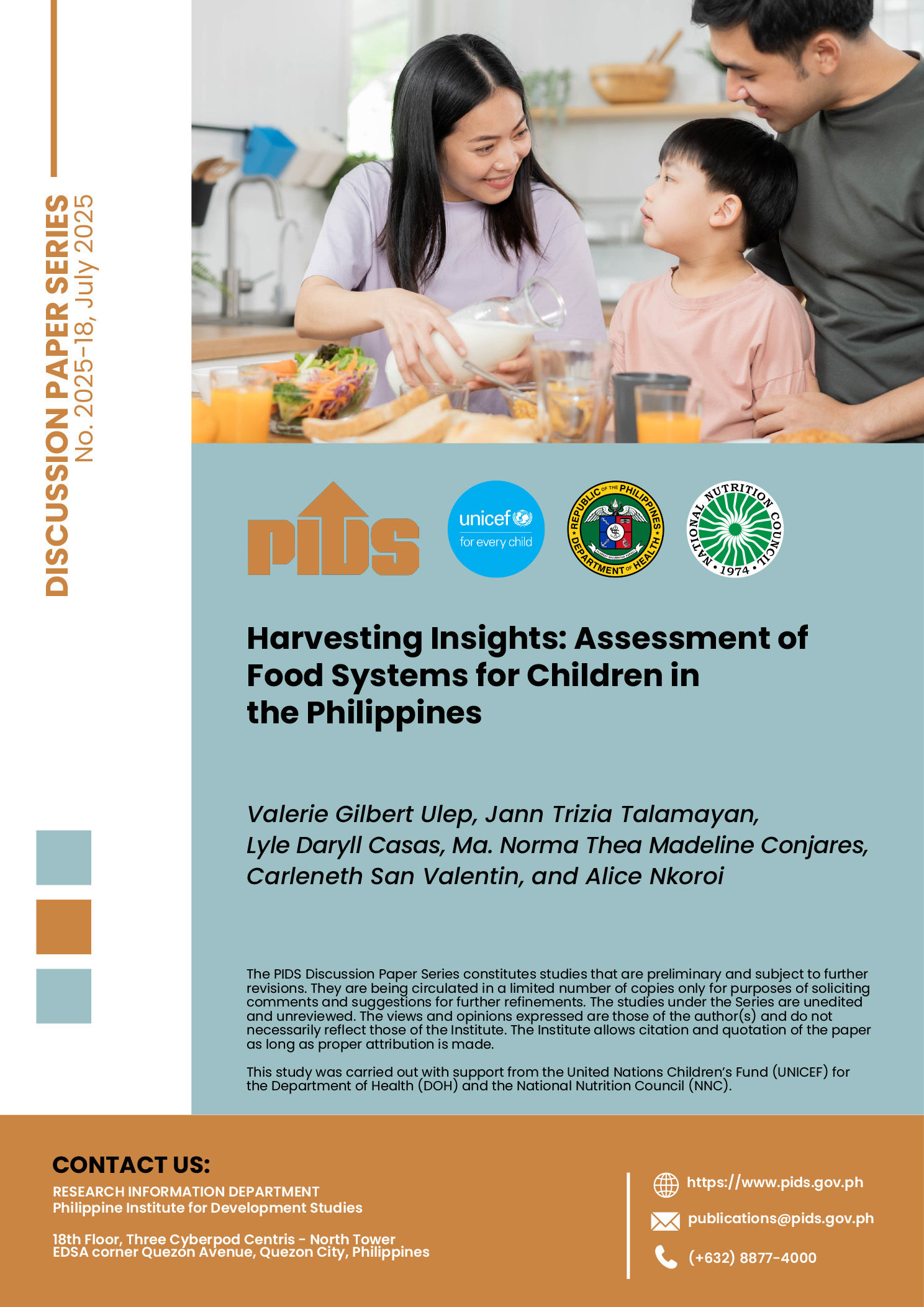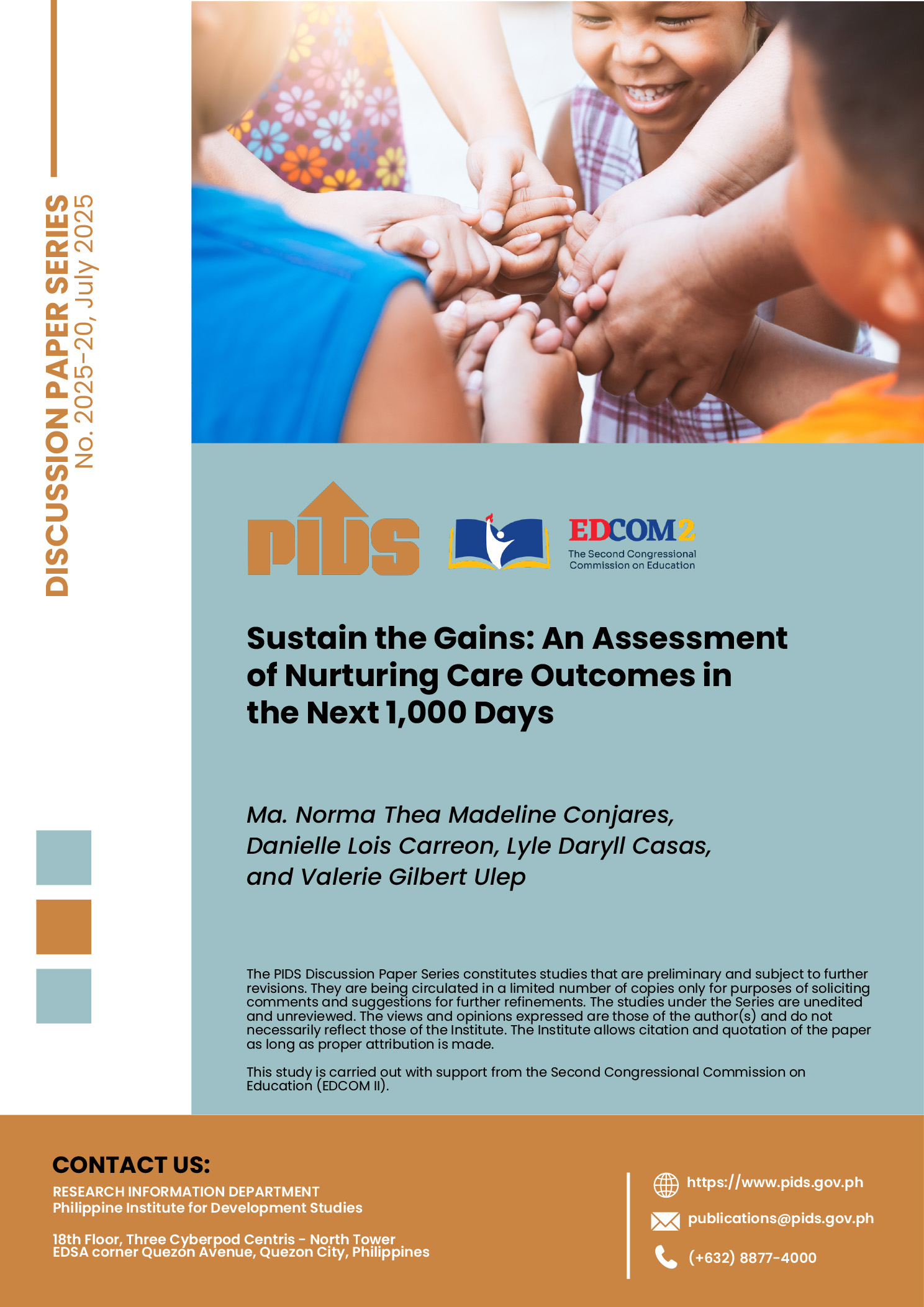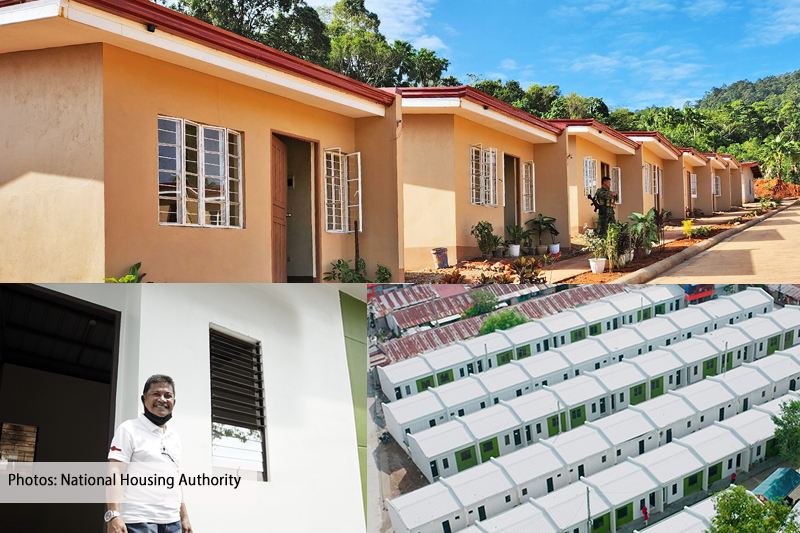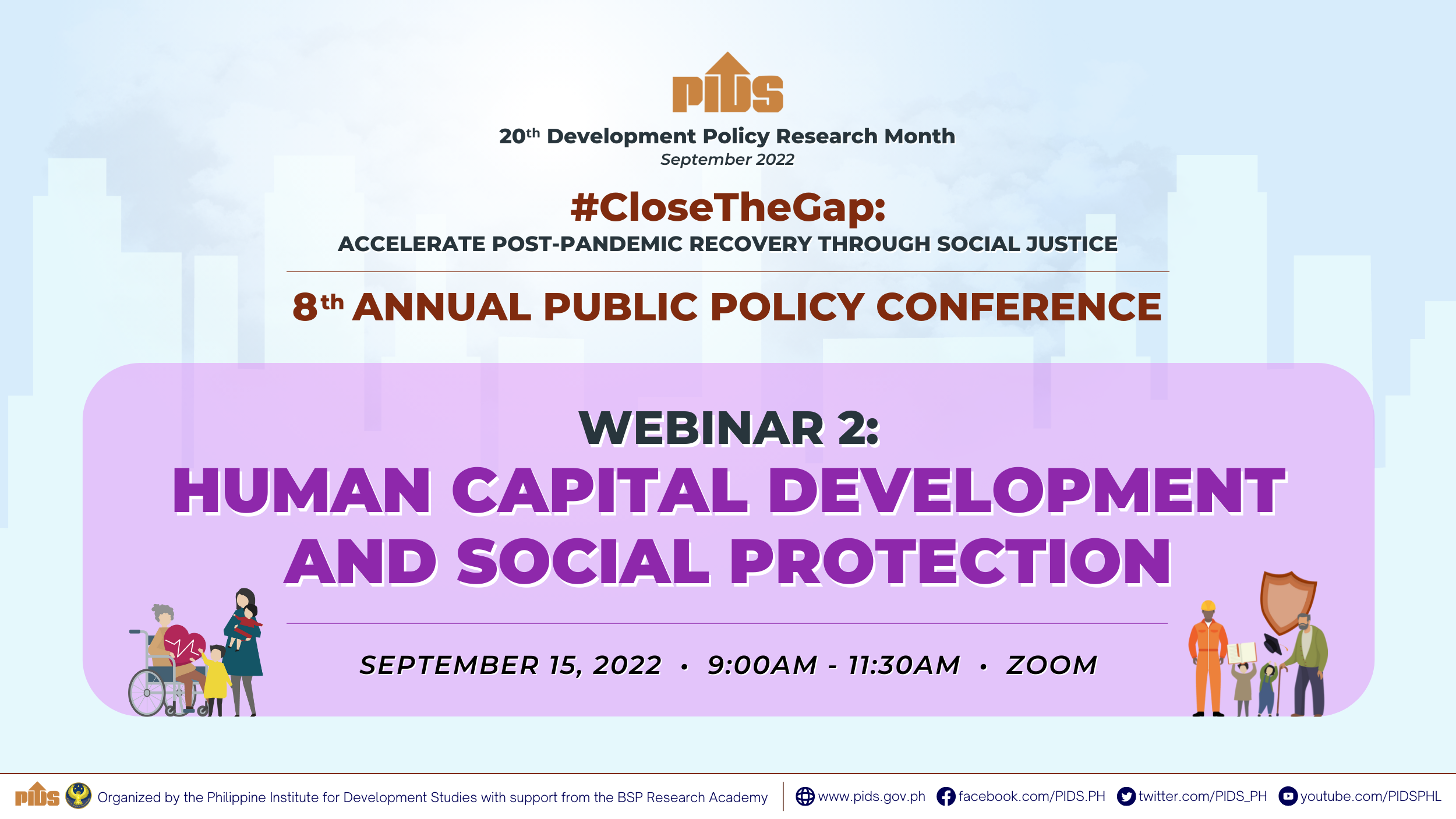This third issue of the PIDS Economic Policy Monitor (EPM) focuses on regional economic integration and inclusive growth. With the approaching ASEAN Economic Community by 2015, it is but fitting to look at the effects of the rapid pace of regional economic integration on the achievement of sustained, inclusive growth in the Philippines. The papers in this issue show that regional economic integration can become a double-edged sword for the Philippines when its pursuit of full integration into the regional and global economy is not complemented by domestic policy reforms in key economic sectors, the strengthening of industrial policy, and deepening of poverty reduction efforts.
Consistent with past issues of the EPM, Chapter 1 looks at recent macroeconomic developments. Chapter 2 highlights policy developments in important areas of the economy. Policy updates in international economic cooperation, fiscal policy, education, agriculture, mining, energy, infrastructure, and housing are presented. The remaining chapters are allotted to two special papers that mainly address the topic of this EPM. Chapter 3 highlights the stagnation of the manufacturing industry as the major reason why the Philippines has not been as successful as its East Asian neighbors in harnessing the gains from regional economic integration, particularly in reducing poverty incidence. The chapter recommends the revival of the manufacturing industry to achieve more inclusive economic growth. Chapter 4 examines the Pantawid Pamilyang Pilipino Program (4Ps), the national government`s key strategy for poverty reduction and social development. The program`s salient features were assessed with respect to its ability to upgrade the country`s human capital.

